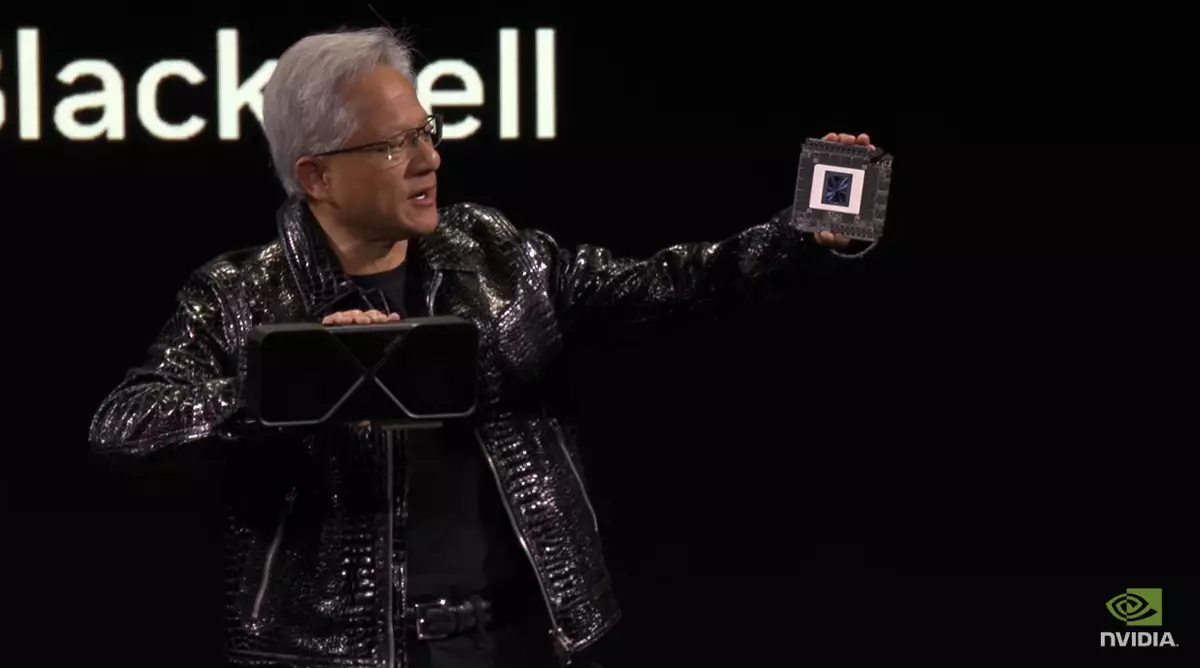At the highly-anticipated Nvidia keynote during CES 2025, CEO Jen-Hsun Huang presented an ambitious lineup of graphics processing units (GPUs) called the RTX Blackwell series. At the forefront is the RTX 5070, a model that seemingly redefines value for performance with a staggering claim: it purportedly offers performance equivalent to the previous flagship RTX 4090, but at a striking price point of just $549. Such a statement is bound to raise eyebrows in a market where consumers have come to expect premium prices for high-end capabilities. The RTX 4090, after all, initially commanded a hefty price of $1,599 and was often found at even higher costs throughout its lifecycle.
This major shift in pricing and performance is largely attributed to Nvidia’s latest technological innovation, specifically the incorporation of DLSS 4 (Deep Learning Super Sampling). This is where the RTX Blackwell GPU series begins to shine, particularly with its newly introduced Multi Frame Generation technology. This development allows for the generation of additional frames using artificial intelligence, effectively rendering a primary frame and then producing up to three supplementary frames. Nvidia’s strategy here leverages AI’s computational prowess, transforming how we experience gaming visuals and opening up a new realm of playable frames per second (FPS) — a feat that significantly bolsters the perceived performance of the mid-tier RTX 5070.
Transforming the Gaming Landscape with AI
The real magic, however, seems to lie not just within the silicon but rather within the Nvidia software enhancements accompanying these GPUs. While the RTX 4090’s raw performance stood unrivaled based on its architecture, the RTX 5070 and its siblings may offer comparable experiences primarily due to advancements in AI technology. This shifts the conversation from traditional specs like CUDA cores and memory bandwidth to the quality of the gaming experience across a burgeoning library of supported titles—a strategy poised to redefine how gamers prioritize their selections.
The RTX Blackwell series will encompass a diverse lineup that includes the flagship RTX 5090, which has an eye-watering price of $1,999 and promises to deliver double the performance of the previous top-end Ada GPUs. This astronomical price might deter some, yet it is justified by the unparalleled performance claims attributed to this new technology. In contrast, the RTX 5080 retails for the same $999 price tag as its predecessor, the RTX 4080 Super, while allegedly providing double the power when leveraging DLSS 4 technology. This strategy of maintaining competitive prices for certain models, while elevating others, illustrates Nvidia’s sharp positioning in the marketplace.
Debunking Misconceptions Around GPU Pricing
Prevailing consumer fears of exorbitant price hikes for the RTX 50-series appear to have been overstated. Instead, Nvidia has opted for a more balanced approach to pricing and product differentiation. The RTX 5070 Ti and RTX 5070 will follow in February, priced at $749 and $549 respectively, establishing a new standard for entry points into high-performance gaming. The decision to maintain the pricing architecture reflects a keen understanding of market demands and consumer price sensitivity, ultimately ensuring accessibility to next-gen gaming experiences.
This blend of affordability and cutting-edge technology invites both enthusiasts and casual gamers into the fold, creating a more inclusive gaming ecosystem. But as with any groundbreaking product introduction, it remains crucial to monitor real-world performance metrics and gamer feedback, especially after launch. While Nvidia’s bold claims set a promising precedent, real-world tests and user experience will ultimately dictate the success of these new GPUs.
Nvidia’s RTX Blackwell GPU lineup signifies an exciting moment for the gaming community and sets a palpable expectation for how technology can shepherd in remarkable advancements in gaming performance without exorbitant price tags. As the launch dates approach, anticipation builds around how these products will redefine gaming standards and influence consumer choices. In the ever-evolving realm of technology, Nvidia has crafted a narrative that balances innovation with accessibility, generating a hopeful horizon for gamers worldwide.

